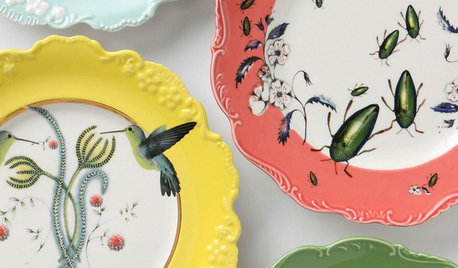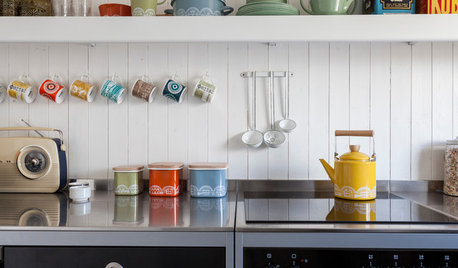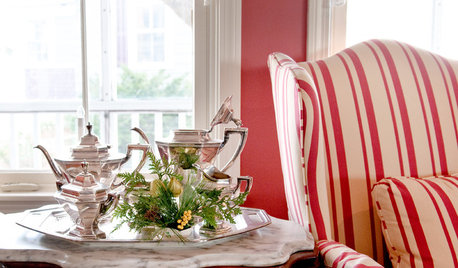Green Tea Variation?
RyouMisaki
9 years ago
Related Stories

KITCHEN DESIGNHot Ideas and Tips for Coffee and Tea Stations
Let options like drawer inserts and built-in coffeemakers percolate now, so your hot-drinks station can best serve holiday guests
Full Story
PRODUCT PICKSGuest Picks: Dishes and Tea Towels That Bring a Smile
Eat your heart out with kitchen accessories that put the "fun" in "functional"
Full Story
COLORExterior Color of the Week: 6 Ways With Sage Green
See how to set your home apart with this popular green
Full Story
LIFEHow Do You Make Your Tea and Coffee in the Morning?
A morning cup is a must for many, and preparation comes in many guises. We look at coffee and tea habits across the Houzz community
Full Story
DIY PROJECTSDining Set Makeover: Paint and Tea-Tinted Fabric Make Old Chairs New
Reclaim dated dining chairs for far less than buying new, using spray paint, modern fabric and a handful of tea bags
Full Story
PRODUCT PICKSGuest Picks: Brew a Perfect Cup of Coffee or Tea
Get your caffeine fix in style with well-designed accoutrements from makers to mugs
Full Story
EDIBLE GARDENSTake Refuge in an Iced Tea Garden
Cultivate the fine art of lounging in the shade and sipping a cold beverage
Full Story
KITCHEN DESIGNCooking With Color: When to Use Green in the Kitchen
Consider a taste of Romaine or Pale Green Tea to make your kitchen walls or cabinets the freshest ones around
Full Story
GREEN8 Green Palettes Worthy of Envy
Softly neutral or bold and bright, green is a surprisingly versatile partner for other colors and many design styles
Full Story
LIFESimple Pleasures: Indulging in Teatime
Get out the china cups and cream-slathered scones. Tea with treats can make even an uneventful day feel extravagant
Full StoryMore Discussions










drmbear Cherry
RyouMisakiOriginal Author
Related Professionals
Otsego Landscape Architects & Landscape Designers · Aurora Landscape Contractors · Wakefield Landscape Contractors · Cordele Landscape Contractors · Goodlettsville Landscape Contractors · Leicester Landscape Contractors · Nanuet Landscape Contractors · Rancho Santa Margarita Landscape Contractors · Twin Falls Landscape Contractors · Wallingford Landscape Contractors · Boston Roofing & Gutters · Queens Roofing & Gutters · Woodstock Roofing & Gutters · La Jolla Roofing & Gutters · Cave Spring Roofing & Gutters